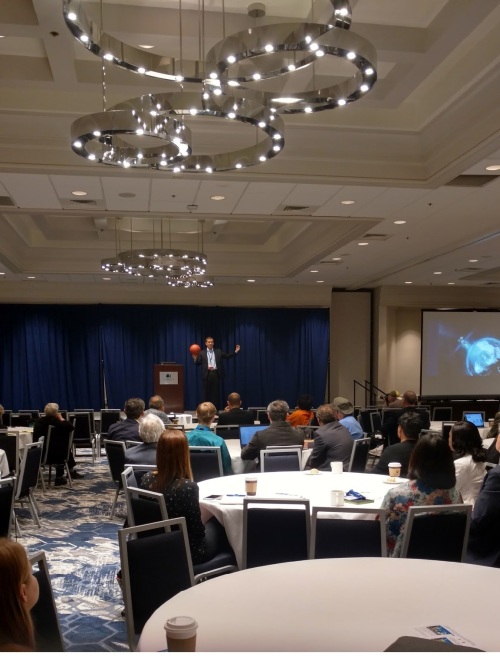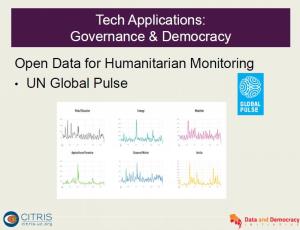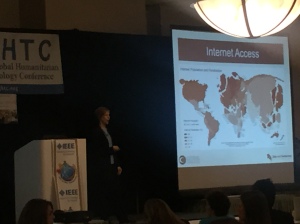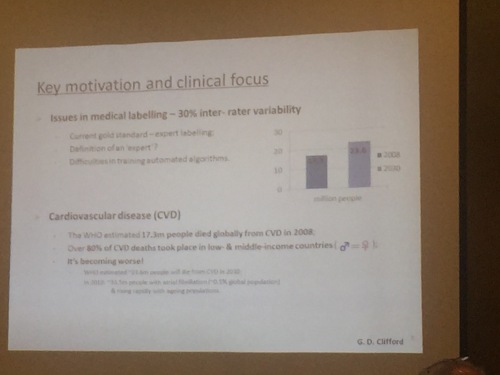IEEE GHTC 2018 (Young Professionals/ Women in Engineering Reception) Pre-Conference Keynote – Erna L. Grasz, Founder and CEO of Asante Africa Foundation ( www.asanteafrica.org)
On Oct. 18th, 2018, a welcome reception for the IEEE GHTC 2018 attendees was co-hosted by the IEEE Santa Clara Valley – Young Professionals, and Women in Engineering chapters. The highlight of the reception was the inspiring keynote presentation by Ms. Erna L. Grasz, Founder and CEO of Asante Africa Foundation ( www.asanteafrica.org). She facilitated a thoughtful conversation on Getting Your Humanitarian Innovation Funded.
Although there have been many well-intentioned donations from the USA to Africa, some of them may not meet the needs of the local community. Many of us here in the Northern half of the globe would like to be a partner to make the world a better place for children and communities in the southern half of the globe, yet sometimes we are not approaching it in a partnership manner. For example, thousands of mosquito nets were air-dropped into locations where there was no problem with mosquitoes. Engaging the local community early and often is essential to “doing good, not just feeling good”.
Alongside the development of technologically innovative solutions for the developing countries, it would be necessary to develop a business model framework to navigate to a sustainable business. Today’s thought leaders indicate that the traditional level of business plan details are not so realistic for a new innovation in a new market, so business models are taking their place.
Business canvas model is readily being used for new entrepreneurs locally and globally. It is now a popular tool for developing the business model framework. AirBnB is one of the well-known companies that has adopted business canvas model to initially launch their business.
When deciding on what your start up business is worth, it is important to Identify and define the end game is necessary as that would impact the type of partner you would need. ( SSIR article)
Venture funding may be scarce for social impact businesses, as there is usually an expectation for a hockey stick growth projection. At least initially personal funding and crowdsourcing appear to be the way to go. During the offline Q&A, Erna confirmed the possibility of bringing innovations that are developed for the low resource regions back to the US, which can solve similar problems in the US – in a hockey stick shape, perhaps.
Every start-up CEO requires a team around them, with complementary skills, ideally. Thus you should know your strengths and weaknesses, and what other talents you need to make the business stronger.
The video: “Africa-your voice matters” carries an important message that the World needs new speeches and that those new speeches will come from this new young generation – to lead everyone towards building a better World for a new generation.
There are no limits on what you can do, when you are able to see yourself as that global change agent.
https://www.youtube.com/watch?v=73g8I2KebD4&t=25s
Following the inspiring keynote by Erna was the students’ poster competition award ceremony. There were three prizes awarded to:
- People’s Choice – Hong Kong Polytechnic University, “Capacity Building in Cambodia by Technology”
- Technical Award – (absence)
- Judges’ Award – DeVry University, “Vision Buddy”
Acknowledgments to Ms. Erna L. Grasz for her comments and suggestions to improve the original draft of this blog.



















